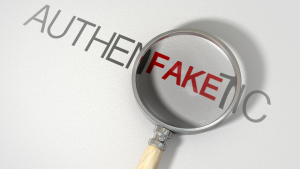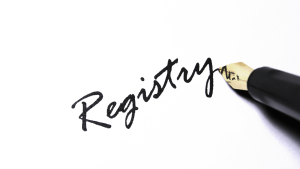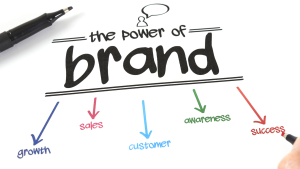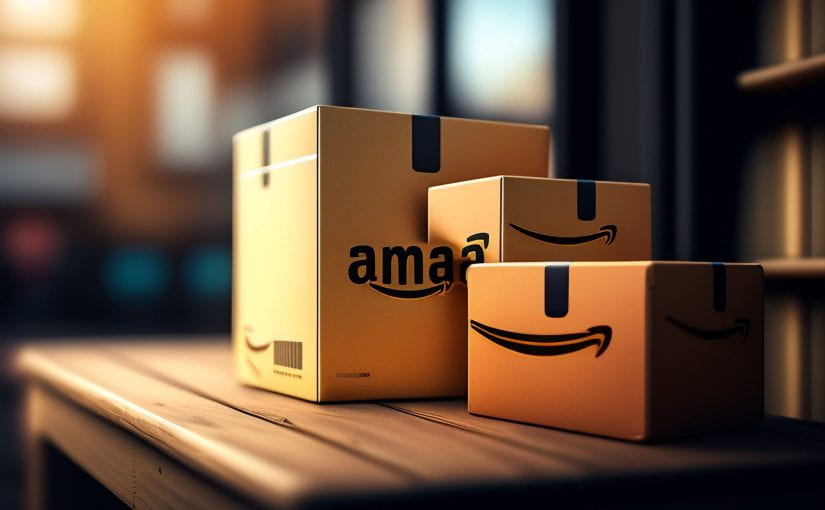Amazon has made it easier than ever for brands to stand out on its platform with the launch of its newest system. With Amazon Posts, the e-commerce giant is trying to improve brand messaging and give brands more ways to show off their values and products through visuals and stories.
With unique branding, you can promote all of your products on your page on popular social media sites like Instagram, TikTok, and Facebook. This makes it easy for customers to find your brand all in one place. Sometimes things aren’t that easy on Amazon.
Before they buy one of your items on Amazon, a customer might not know that you also sell other things that they might like. Sellers can post material from social media sites to Amazon through Amazon Posts, which aims to solve this problem.
How to Get the Most Out of Amazon FBA Posts?
You will need to make posts often and interesting as part of any social media plan. When posting on this site, there are some simple things you should remember.
Stay On-Brand
It’s helpful to use material from other platforms again because (hopefully) it’s all well-designed and utilizes Amazon product photography with great images and content that fits with your brand.
Your Amazon Posts probably won’t help your business if they are messy, have spelling or grammar mistakes, low-quality images, or content that isn’t interesting or relevant.
You might want to use tie-ins with your goods. If you sell art supplies, for instance, a post called “How to Use Oil Paints” will get more people to your store than “Classic Oil Paints – 10-Pack.”
Imagine Where Your Posts Will Show Up
You might want to know where to find Amazon Posts. As long as they are relevant and customers are interested, they are put in feeds and on product pages immediately. This means you won’t be able to choose where you’re shown.
Amazon listing Images and text from your posts show up on Amazon in feeds for your brand, product detail pages, feeds for related goods, and feeds based on categories. They work well with Amazon Brand Stores too. Make the most of your content by making it general, broad, and easy to shop.
Where Is It Available?
Sellers in the Amazon Brand Registry, vendors, and organizations that work with vendors can all use this program.
You can make Posts as an Amazon DSP user, but you need to have an account in the advertising console. Posts can be used by anyone who sells on Amazon, but you don’t have to advertise on Amazon to use them.
How to Get to Amazon Posts
You will need to join the test program on the Amazon Posts page to use the service. Use your Seller Central or Amazon Ads login information to log in. You can make a biography, add information about your brand (logo, etc.), and then start writing posts.
Reasons to Try Amazon Posts Under Listing Images
There are real reasons to think about Amazon Posts, even though it isn’t fully developed yet, and it’s free for approved brands right now. Something can still go big even if it doesn’t seem like a likely winner at first.
These things happened with Google Posts in real-world shops. There was a time when no one knew what to do with the knowledge. Soon, people got creative, and they found new ways to change. You and your brand might fit that bill. You should try Amazon Posts for these four reasons.
You Want More Impressions and Reach
There is a good match and a high chance of conversion if your items are already out there and someone is looking for them.
There are also more places where you might be found if you show up in more places. By using these new amazon creatives and discovery experiences, you can improve your branding and social media by:
- Making people more familiar with your brand
- Putting your products and brands on display through the power of lifestyle photos
- Sharing more of yourself with your audience
- Giving you another way to reach people you sell to online
Always Test and Look for Amazon Advantage
By now, you should have done a low-risk test and listened to the numbers before going all-in. Luckily, metrics exist! Brands may see the impressions, clicks, and CTRs for highlighted products on Amazon Posts.
You can test out various ideas (and items) with this method to find out what customers like. There are fewer restrictions on Amazon listing images and material on Amazon Posts compared to your product description page.
Make use of Amazon Posts to showcase your inventive and eye-catching products. A fresh set of metrics will reveal how people view your offerings. The numbers might not back up your assumption that everyone wants to see your pet iguana wearing one of your new reptile tiaras.
Resources and Space to Experiment
Having access to resources does not guarantee an endless supply of cash. Prioritize your tasks, choose how to best use your time and energy, and consider your experimental constraints.
You might be able to repurpose your material for Amazon Posts with little to no effort if you already have a solid following on another social media platform.
You Wish to Maximize Customer Interactions
You can improve the customer’s experience with your brand in countless ways. Improving client retention rates among Amazon brand advocates will be your top priority.
Using Amazon Posts, you can start developing brand loyalists today, laying the groundwork for when Amazon Manage Your Customer Engagement becomes accessible.
How To Post on Amazon FBA
If you’re already familiar with social networking, publishing on Amazon will be a breeze. Content structures match those of platforms like Instagram.
- You can see the brand name and logo up top, left. A “follow” button allows customers to be kept informed of the latest brand material, and it’s located to the right of the logo.
- Midway through the post, you’ll see the bespoke image that showcases the product or tells the story of the brand.
- You may find links to the products featured in the post beneath the custom image.
- You can interact with customers using words or emojis in the caption, which is situated below that. Keep your captions simple and honest at all times.
- The product’s labeled categories are located at the very bottom. When consumers click on the appropriate category tags, it will lead them to content that is linked to that category.
Below, we outline the six steps to use them now that you know what they constitute of.
- At this point, you should register for Amazon Seller Central if you haven’t done so already.
- Find the “Create Amazon Posts” option in the top right corner and click on it. After that, the builder will pop up, and you can start making posts and seeing previews of them.
- A personalized photo is the first thing you need to publish to your AMZN post, much like on Instagram. The catch is that you can only use one image for each post, unlike Instagram.
You must remember this requirement before selecting your image:
- Save as: JPG or PNG
- The RGB color space
- Aspect ratios of the display: 1×1, 16×9, 4×3.
- Up to 100 MB in size
- Minimum required resolution: 640 `x 640 pixels
But you can’t have any of the following in your picture:
- Company logos
- An instruction to do something, such as “Follow Us” or “Buy Now”
- Animations
- A collection of related things, like a picture of several new products
There is a 2200-character limit for captions and they must stick to these guidelines:
- Promote a product that your brand owns or has permission to distribute. Use language that is suitable for a general audience and is written in the native language of the Amazon marketplace where your brand sells.
The following should not be included in your caption:
- Evaluations or feedback from clients
- Sales events
- Pleas for a like, remark, or share
- Citations of competing brands
- Demands to get in touch with your company via other means, such as email or social media accounts
You can use hashtags, emojis, or shorthand (such as “b/c” for “because”), just like in other social network posts. Some people may get confused, so it’s important to remember who you’re writing for.
Enter Your ASIN
Enter your product’s ASIN after you’ve finished the creative part of the posts. When customers click on your article, this ASIN will generate a link that will lead them to your product listing images.
Submit
Your completed content is ready for viewing and submission now. You can see the final product for your clients in the upper right corner of the website.
After making sure there are no mistakes, hit “Submit for review.” The AMZN Post website will allow you to see how well your post did after Amazon has approved it.
How to Use Amazon Posts Most Successfully
In some ways, brands do have trouble making posts that are both interesting and right for their brand because they are hard to write. It should help you to follow these best practices.
Jump In Like Social Media Posts
First, you should make an account, then you can use it. You should post as much here as you do on social media. Keep in mind that the tone and style should be the same. You’ll probably post at least once a day, but some experts say you should post more than once a day.
How much you spend and how much competition there is in your area are the main things that determine this.
Avoid Using Sales Language
Make sure the topic of your writing is right. Use a tale style of communication instead of bragging about how great your product is. What it can do for them, how it can help them, how it can solve their problems, or how well it has worked for other people. Through posts, a lot of this can be done through great Amazon product photography.
Also, keep in mind that words alone won’t make people believe your product is great. People should find out what it can do for them. For certain products and your business as a whole, you can also use posts. With so much competition on Amazon, it can be hard to build your business. This is one visual way to do it.
Making Different Kinds Of Content
The goal is to get people to buy your Amazon goods by using posts as amazon creatives. Because of this, you don’t want each post to be about the same thing.
Come up with a bunch of different ways to show off your goods or features. Each post should be short and to the point, but make sure it gives more or different information than your product page title. Before you start, ask yourself a few things:
- Who buys this item?
- Is there more than one way or reason to use the item?
- What one thing about the goods do people like about it?
- Has someone bought this item and used it specially?
- What makes your item different from others on the market?
- Each post should be original, funny, interesting, and different. That will help people feel more connected to your brand and make your marketing effort stronger.
Learn the Main Parts of a Post
Your Amazon Post will be made up of several parts. You can change each of these to fit your business and product. Because you only have a few words to show, each one needs to be good.
- This is where you’ll put your brand’s name. It’s next to your listing images.
- This is the most important part of the post: the custom image. That’s what your clients will see. Show off the product’s features or tell a story for Amazon customers to learn from the picture.
- Click on this link near the bottom of the picture to show the product icon. You can choose to hide or show a product card. On the product card, you can see information about the item, like how many stars it has on Amazon, how much it costs, and whether it’s available for Prime.
- There is space below your picture for you to write something. Custom captions are useful because they let you draw attention to a product feature or explain something in more depth. You can also use it to help your brand.
- If the product allows it, you might even want to add a call to action here.
- They are very important and have already been done for you. Amazon will automatically add item groups to the post. If a buyer taps that tag, it takes them to a feed of posts that are shown vertically. All of these are in the same group and aren’t always your products.
- Use inspiring pictures of people living their best lives. This will make people want to check out your brand’s feed, story, and goods. The pictures should still be related to your business. For example, if your brand sells cooking tools, you might want to post pictures of food or people cooking.
- When you post a lifestyle photo, make sure it’s high quality and stands out. The photo is the first thing that people see, so it needs to be interesting and catch their attention. You should think about the quality of the photos you use because bad photos will make your brand look bad.
- You can post as many times as you want, just like on Instagram. So, post more than once a day, and your customers will be consistently engaged with your brand.
- Use an interesting headline. You can have up to 2200 characters, but Amazon will only show the first two lines at first. Use this as your headline, and make sure it makes people want to read the rest of your description.
- You can plan your content and make sure that your brand’s feed is always up-to-date by scheduling posts ahead of time.
- Use material from other social media sites in new ways – It’s easy to reuse content if your Amazon business already has an Instagram account since the structure of content on both sites is very similar.
Feeling social already? Make a little room for one more shelf. Avoid sharing an exact copy of something you’ve already posted somewhere else.
Thoughtfully consider your audience and keep in mind that Amazon is for selling, not talking or sharing. Focus on what works for your Amazon community and make changes as needed. Get to know your offering and bring it with you. You’re on the go and want to show off your new product in a different place.
3 Examples of Amazon Posts
AIUHI
Amazon product photography from AIUHI is a good example of how the company reaches its target audience. The utensil set is an important part of the lifestyle picture, but it’s not the main focus.
You can learn important things about the Post’s product in the caption, like how their wooden cookware doesn’t scratch pans and is good for the earth.
Lugz
Customers are interested in Lugz’s post because it uses symbols. Also, their description is short and funny, which makes them appealing to customers because they don’t have to read a lot of text to understand the Amazon Listing images.
T&M Wholesalers
Finally, T&M Wholesalers uses a well-designed picture with words to let people know right away what the product is. People are sitting in the back of the picture while the candle burns, which shows how the product can be used.
Check out the Amazon Shopping app and look through the product lists to see more AMZN Post examples.
Where Can We See Amazon Posts?
As you shop on Amazon, you can find Brand Posts in four places:
Brand Feed
This is where posts made by a brand show up. The “Posts” tab in the Amazon shop will take you to it. When someone goes to the Amazon Brand Store, they can look through the posts to see what’s available.
Products Details Pages
Brand Posts can also be seen on the pages that describe your products. Customers see the posts in a slideshow style when they go to a product page. With this extra space on the product page, brands can keep customers interested in their goods.
Multiple Brands’ Storefronts and Product Pages
Your posts can show up in the feeds of multiple brands. Amazon will usually fill in poor-quality posts from other brands if one brand doesn’t regularly share good-quality posts.
Categories
For each post for Amazon advertising, a category or niche hashtag is made, which creates a category list. Your posts are shown next to posts from brands that compete with yours in this category display.
Amazon’s algorithms make sure that your items show up in the right area, feed, product page, or section for brands that are similar to yours. If you write your posts correctly, they will show up on all the right pages, feeds, and sections.
Wrapping It Up
Amazon Posts is a great feature that combines social media with shopping online. Although it is still in testing, this new feature looks very good and is expected to play a big role in online shopping.
It’s free advertising for your business and products, so you should make Amazon posts. Brands shouldn’t be afraid to use the service as long as it’s free.
Curious about how Amazon Posts can enhance your online presence? Connect with our experts for a friendly chat and explore the possibilities!



















